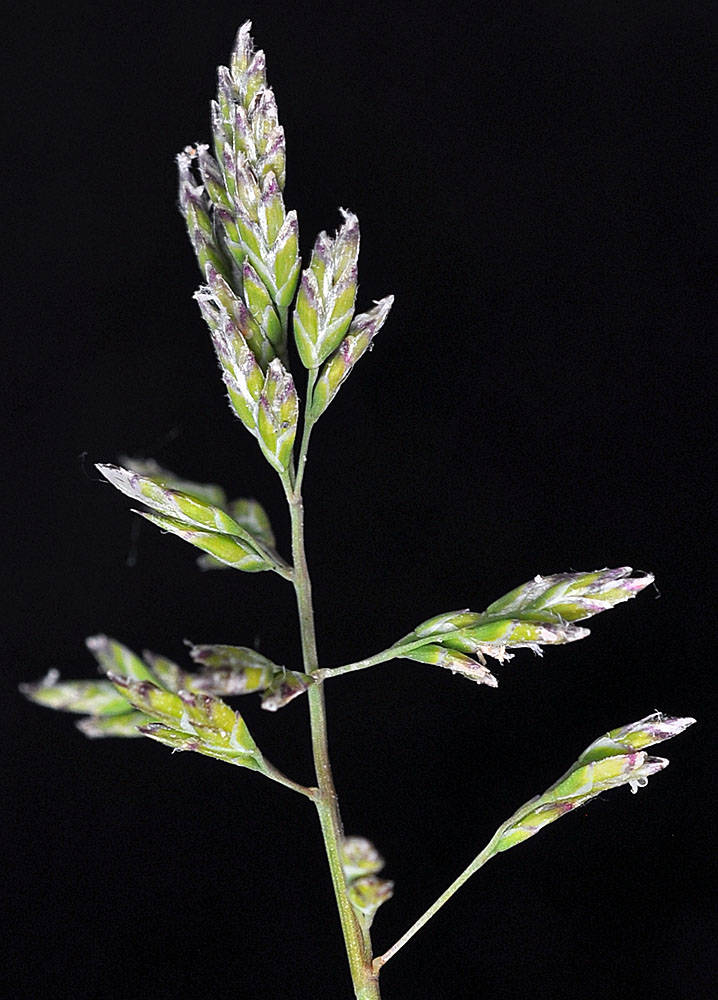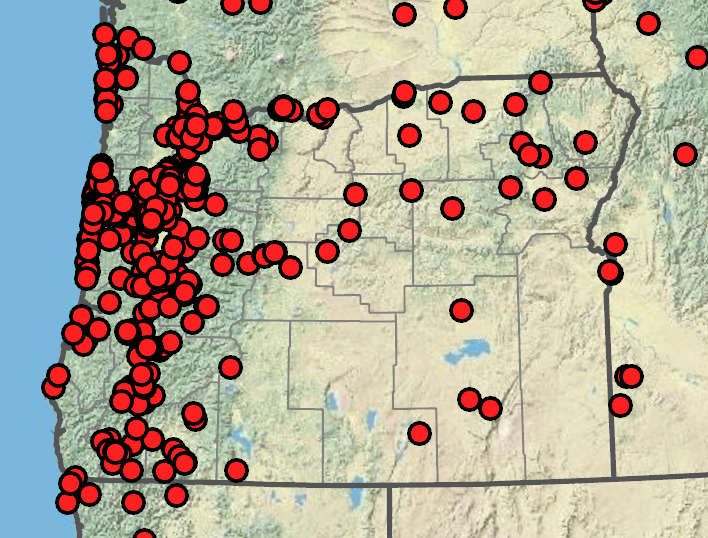Poa annua
Poa piperi
annual bluegrass
Piper's bluegrass
nodes terete or weakly compressed.
nodes terete, 0–1 exserted.
intravaginal.
extra- and intravaginal.
sheaths closed about 33% of their length;
ligules 0.5–3(5) mm;
blades flat or weakly folded, 1–10 cm × 1–3(6)mm; smooth.
sheaths closed 33–50% of their length, bases of basal sheaths glabrous, collars of at least some leaves usually sparsely short-hairy;
ligules 1–2 mm, blades of tillers to 40 cm long;
upper surface moderately to densely scabrous or minutely hairy on and between the veins;
cauline blades involute, 1–3 mm wide;
lower surfaces smooth;
upper surfaces sometimes sparsely hairy;
blades much reduced higher on the culm; uppermost blades 1–4.5 cm.
1–7(10)cm;
branches ascending to spreading or reflexed.
erect to nodding, lanceoloid to ovoid, loosely contracted; sparse, 4–8 cm;
spikelets 18–60;
branches ascending; lax, 3–8 cm long, 1–2 per node, with 3–8 spikelets.
3–5 mm long;
florets 2–6;
rachilla internodes smooth, glabrous; more or less concealed, occasionally exposed;
distal rachilla internode less than 50(75)% of the length of distal lemma.
6–9(11)mm; to 3 times as long as wide;
florets 2–5(7);
rachilla internodes 1–2 mm long.
lower glumes smooth, 1-veined.
subequal;
lower glumes 3-veined.
glabrous.
with diffuse; soft cobwebby hairs about 50% as long as the lemma.
lanceolate, 2.5–4 mm, keeled; smooth; keels; marginal veins; and usually intermediate veins crisply puberulent to long-villous, rarely glabrous; area between veins glabrous;
tips obtuse to acute.
lanceolate, 4–6(7)mm, distinctly keeled, glabrous throughout; smooth or sparsely to moderately finely scabrous;
keels scabrous;
tips acute.
0.6–1.1 mm, oblong.
vestigial and 0.1–0.2 mm, or 2–3 mm.
=28.
=28.
Poa annua
Poa piperi
Disturbed areas, parking lots, lawns, shores. 0–1700m. BR, BW, Casc, Col, CR, Est, Lava, Sisk, WV. CA, ID, NV, WA; throughout southern Canada and US; worldwide. Exotic.
Poa annua is a small but abundant annual with spreading inflorescence branches and oblong anthers. Poa infirma is very similar but has ascending inflorescence branches and shorter, nearly spherical anthers. Poa supina, supine bluegrass, has inflorescences similar to P. annua, but it is a stoloniferous perennial with longer anthers. It is planted on shady golf courses and lawns where it forms dense, spongy turf. It has not been found in the wild in Oregon but is expected to escape here.
Forest openings on serpentine soils. 300–1600m. CR, Sisk. CA. Native.
Poa piperi is a dioecious, usually glaucous grass with nearly transparent glumes and cobwebby callus hairs.
Rob Soreng, Barbara Wilson, Richard Brainerd, Nick Otting
Rob Soreng, Barbara Wilson, Richard Brainerd, Nick Otting
- Local floras:
BC,
CA,
OR,
WA
- Local Web sites:
CalFlora,
CalPhotos,
Flora NW,
PNW Herbaria
WildflowerSearch
iNaturalist (observations)
USDA Plants Database
- LBJ Wildflower Center
- SEINet
- Plants of the World Online
- Encyclopedia of Life
- Wikipedia
- Google Image Search





